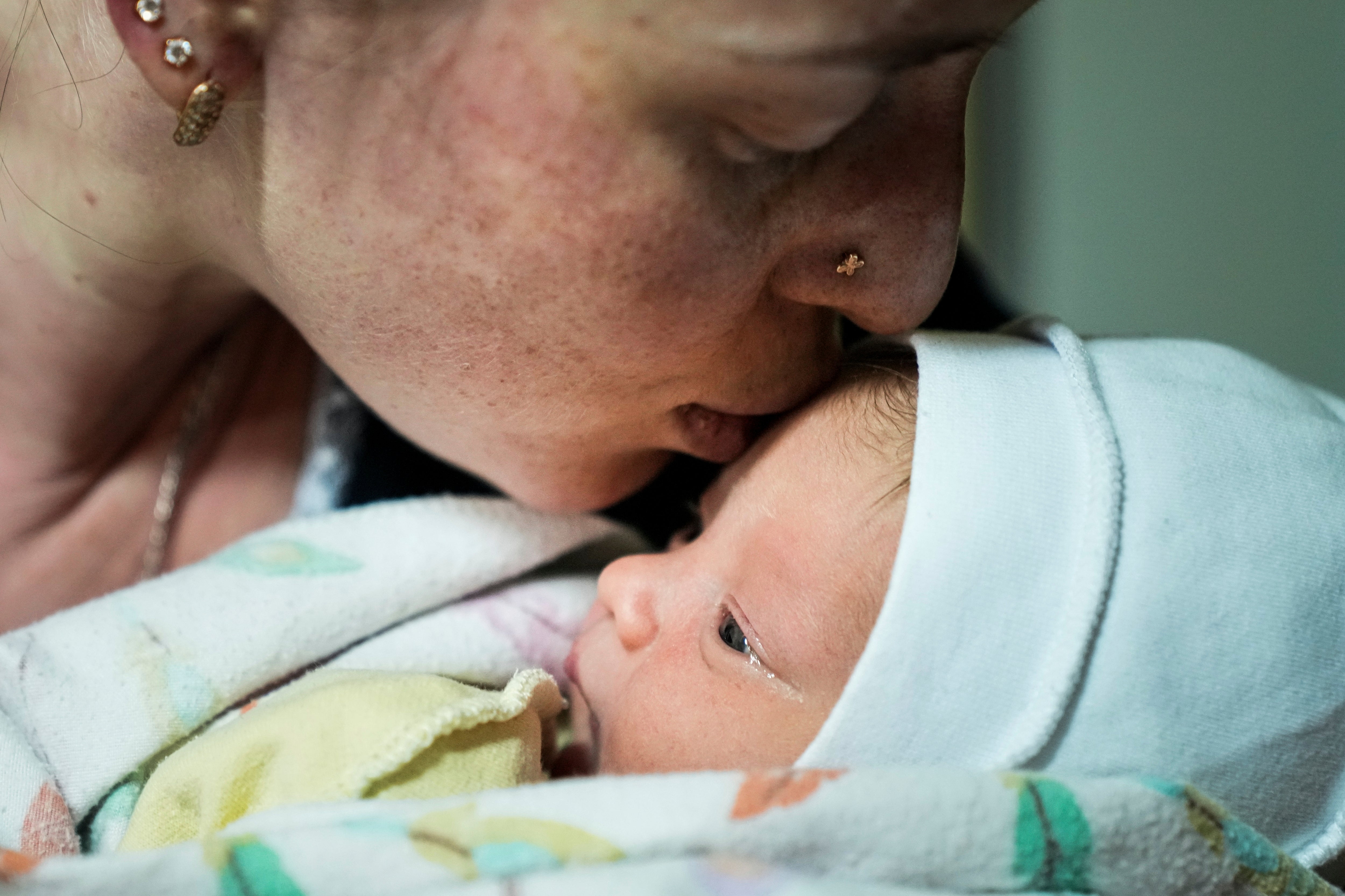Mariupol Diary: Scenes of despair, resolve in Ukraine city
In the first week of war in Ukraine, the country's southern port city of Mariupol saw shelling, the heartbreaking deaths of children, and the hope of new births

A pale, bloodied child, her pajama pants adorned cheerfully with unicorns, is rushed into a hospital, her mother wailing in terror.
New mothers nestle infants in makeshift basement bomb shelters.
A father collapses in grief over the death of his teen son when shelling ravages a soccer field near a school.
These scenes unfolded in and around the Azov Sea port of Mariupol in southern Ukraine over the past week, captured by Associated Press journalists documenting Russia’s invasion.
With nighttime temperatures just above freezing, the city was plunged into darkness late in the week as the battle knocked out most phone services and raised the prospect of food and water shortages. Without phone connections, medics did not know where to take the wounded.
Russia has made significant gains on the ground in the south in an apparent bid to cut off Ukraine’s access to the sea. It also has taken the Zaporizhzhia nuclear power plant, about 270 kilometers (168 miles) northwest of Mariupol. Capturing the city could also allow Russia to build a land corridor to Crimea, which it seized in 2014.
A MOTHER KNOWS THE WORST
“We can make it!” the hospital worker shouts, urging on his co-workers as they race to pull a wounded 6-year-old girl, already pale, from the ambulance in her bloodied pajama pants adorned with cheery unicorns.
Her mother seems to know better.
The woman, in a knit winter cap that is also bloodstained, weeps in terror and disbelief as the medical team first tries to resuscitate the girl in the ambulance, then inside the hospital, where their efforts are both desperate and futile.
As the mother waits alone in a hallway, a nurse weeps while the trauma team tries a defibrillator, an injection, and pumping oxygen. A doctor looks straight into the camera of an AP videojournalist allowed inside.
He has a message: “Show this to Putin.”
___
DEATH COMES TO A SOCCER FIELD
Flashes from shelling light up the medics as they stand in a parking lot waiting for the next emergency call.
In the hospital nearby, a father buries his face into his dead 16-year-old son’s lifeless head. The boy, draped under a bloodstained sheet, has succumbed to wounds from shelling on the the soccer field where he was playing.
Hospital staff wipe blood off a gurney. Others treat a man whose face is obscured by blood-soaked bandages.
The medics prepare to go out, strapping on their helmets.
They find a wounded woman in an apartment and take her in an ambulance for treatment, her hand shaking rapidly from apparent shock. She yells out in pain as the medics wheel her into the hospital.
On the darkening horizon, orange light flashes at the edge of the sky and and loud bangs reverberate in the air.
___
CHILDREN WILL PLAY
The resting toddler, perhaps responding instinctively to the sight of a camera, raises an arm and waves.
But the mother underneath has tears in her eyes.
They’re lying together on the floor in a gym-turned-shelter, waiting out the fighting that rages outside.
Many families have young children. And as children can do anywhere, some giggle and run around the floor covered with blankets.
“God forbid that any rockets hit. That’s why we’ve gathered everyone here,” says local volunteer Ervand Tovmasyan, accompanied by his young son.
He says locals have brought supplies. But as the Russian siege continues, the shelter lacks enough drinking water, food, and gasoline for generators.
Many there remember the shelling in 2014, when Russia-backed separatists briefly captured the city.
“Now the same thing is happening — but now we’re with children,” says Anna Delina, who fled Donetsk in 2014.
___
TANKS IN A ROW
In a field in Volnovakha on the outskirts of Mariupol, a row of four green tanks hold their cannons at roughly 45 degrees.
Two of them fire, jolting the machines backward slightly, and sending clouds of white smoke skyward.
The tanks are painted with the letter “Z” in white, a tactical sign intended to quickly identify military units and help troops distinguish friend from foe in combat.
The tanks with the “Z” move around inside Russian-held territory and are believed to be used by Russian forces.
___
AMID THE DEATH, THE JOY OF BIRTH
A nurse fits a shirt on a newborn who fusses at first and then cries loudly. It is a joyful sound.
Babies born at a Mariupol hospital are taken down flights of stairs to a makeshift nursery that also serves as a bomb shelter during shelling.
Sitting in the dimly lit shelter, new mother Kateryna Suharokova struggles to control her emotions as she holds her son, Makar.
“I was anxious, anxious about giving birth to the baby in these times,” the 30-year-old says, her voice shaking. “I’m thankful to the doctors who helped this baby to be born in these conditions. I believe that everything will be fine.”
Above the basement, hospital staff labor to save people wounded in the shelling. A woman with blood streaming from her mouth cries out in pain, A young man's face is ashen as he is wheeled into the hospital. Another, who did not survive, is covered by a thin blue sheet.
“Do I need to say more?" says Oleksandr Balash, head of anesthesiology department.
“This is just a boy.”
Bookmark popover
Removed from bookmarks